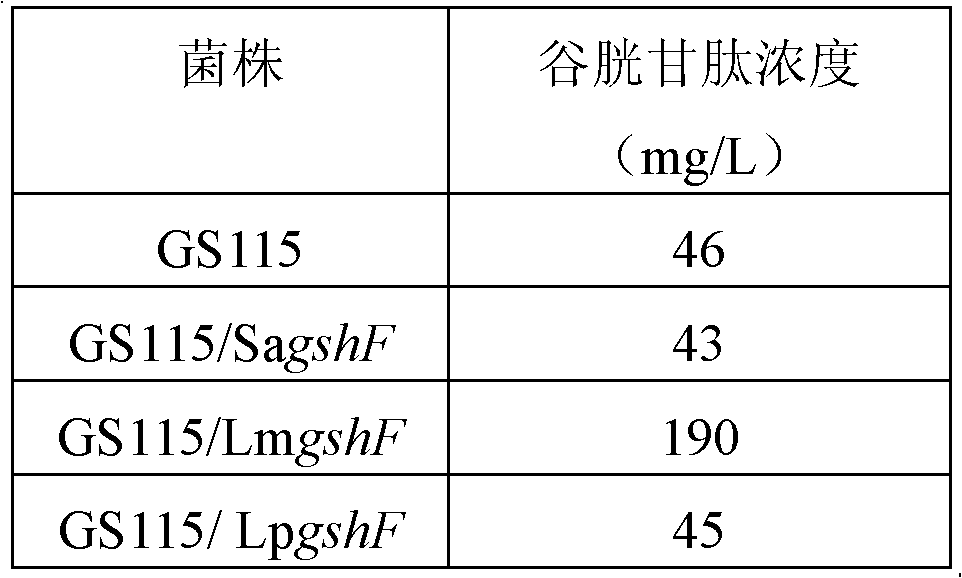Pichia-pastoris engineering bacterium for producing glutathione
A technology of glutathione and recombinant bacteria, applied in the biological field, can solve the problems of high cost, environmental pollution, complicated operation, etc., and achieve the effect of high yield
- Summary
- Abstract
- Description
- Claims
- Application Information
AI Technical Summary
Problems solved by technology
Method used
Image
Examples
Embodiment 1
[0035] Example 1. Obtaining of Pichia strains expressing bifunctional glutathione synthetase
[0036] 1. Construction of glutathione constitutive expression vector
[0037] 1. Construction of recombinant plasmid pGAPZαH
[0038] pGAPZαA (purchased from Invitrogen, catalog number V20520) was digested with BamHI and dephosphorylated to obtain the dephosphorylated linear plasmid pGAPZαA.
[0039] With Forward: 5'-AGATCTATGACATTTCCCTTGCTACCTGCA-3', Reverse:
[0040] 5'-GGATCCTTAA ATAAGTCCCAGTTTCTC-3' is a primer, and the pPIC9k plasmid (purchased from Invitrogen, catalog number V17520) is used as a template to amplify to obtain a 2535bp PCR product. After sequencing, the PCR product has the sequence 3 shown in the sequence table Nucleotides, namely his4;
[0041] The 2535 bp PCR product was digested with BamHI / BglII and purified with an Omega purification kit, and then directly ligated with the above-mentioned dephosphorylated linear plasmid pGAPZαA to obtain the recombinant pl...
Embodiment 2
[0066] Embodiment 2, recombinant strain produces glutathione
[0067] 1. Fermentation of recombinant bacteria
[0068] Inoculate the above-mentioned recombinant Pichia yeast strains GS115 / SagshF, GS115 / LmgshF, GS115 / LpgshF and control strain GS115 expressing the bifunctional glutathione synthase gene (gshF) from different sources in 25ml of sterilized YPD After cultivating in the liquid culture medium on a shaker at 30°C and 220r / min for 42h, collect the bacteria in the above-mentioned fermentation broth with equal OD, centrifuge at 15000g / min for 2min, discard the supernatant and wash twice with sterile water. The final cells were stored at -20°C for future use.
[0069] 2. Detection of glutathione content
[0070] Thaw the collected bacteria at room temperature (25°C), add an equal amount of finely crushed glass beads and an equal volume of Breaking buffer (50 mM potassium phosphate buffer solution pH7.4, 5% glycerol (v / v), 5 mM mercaptoethanol and 1 mM EDTA) followed by ...
PUM
 Login to View More
Login to View More Abstract
Description
Claims
Application Information
 Login to View More
Login to View More - R&D
- Intellectual Property
- Life Sciences
- Materials
- Tech Scout
- Unparalleled Data Quality
- Higher Quality Content
- 60% Fewer Hallucinations
Browse by: Latest US Patents, China's latest patents, Technical Efficacy Thesaurus, Application Domain, Technology Topic, Popular Technical Reports.
© 2025 PatSnap. All rights reserved.Legal|Privacy policy|Modern Slavery Act Transparency Statement|Sitemap|About US| Contact US: help@patsnap.com



